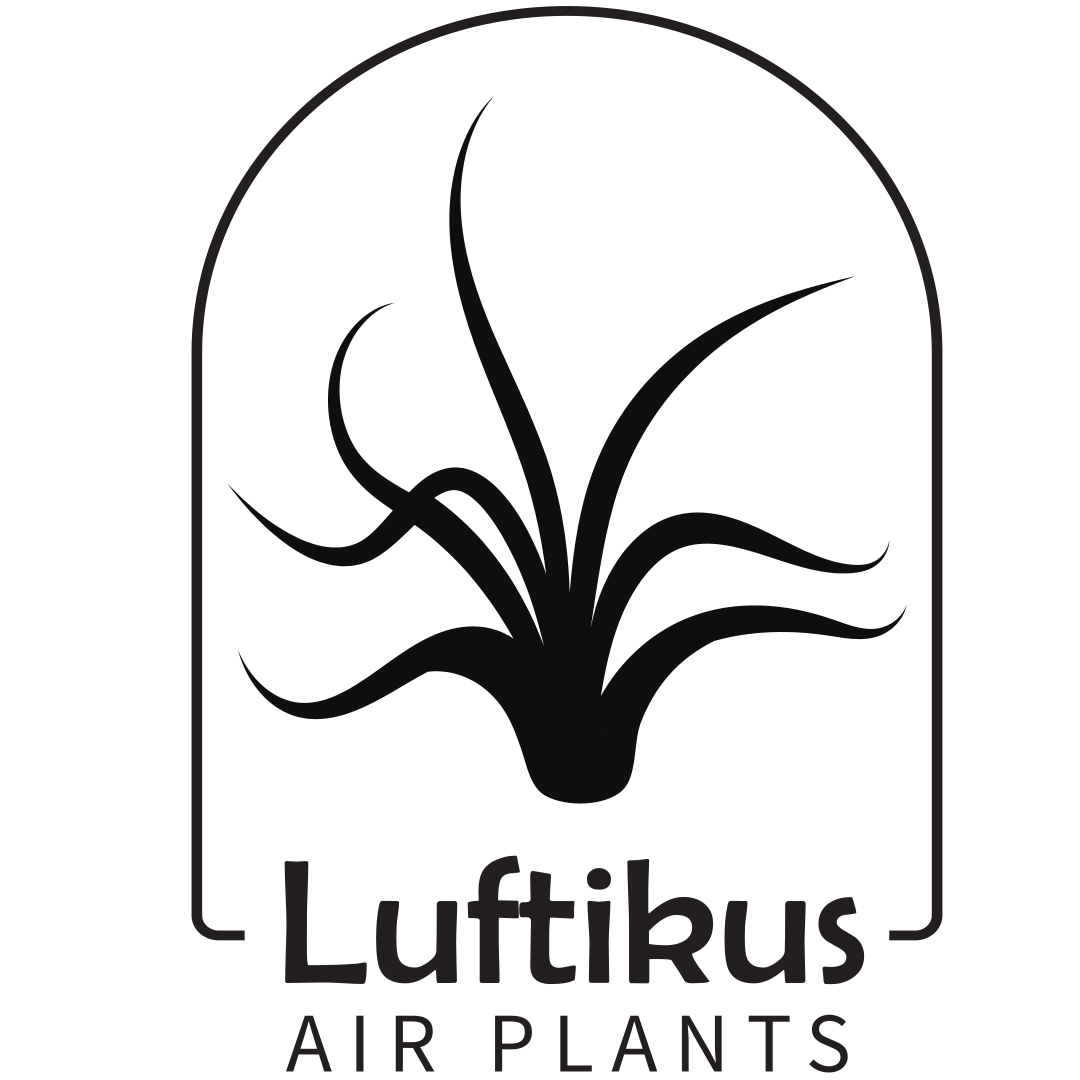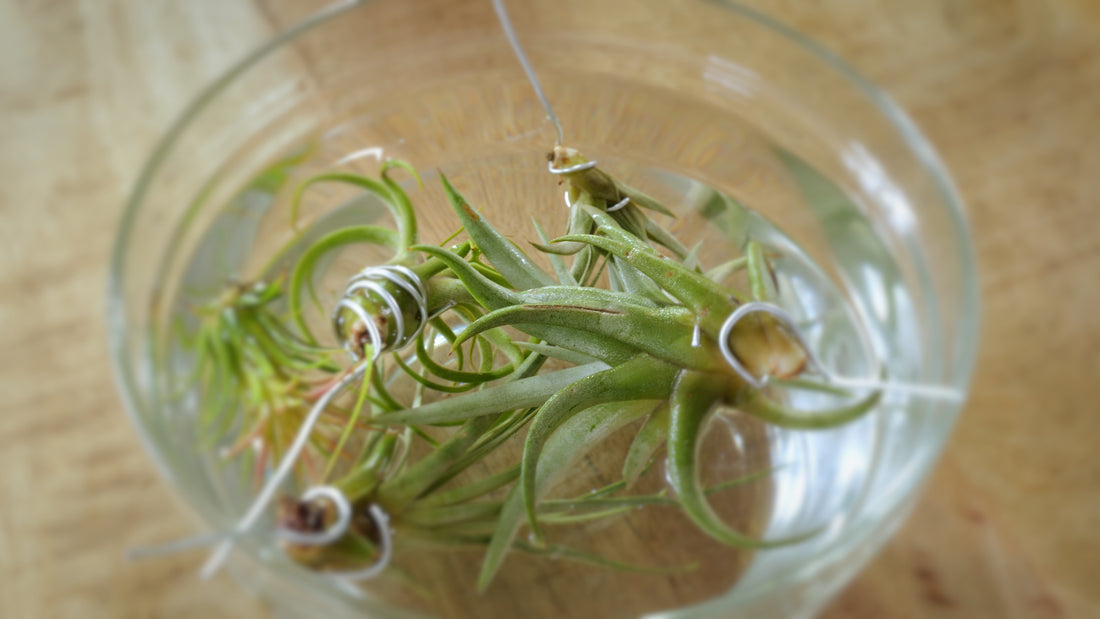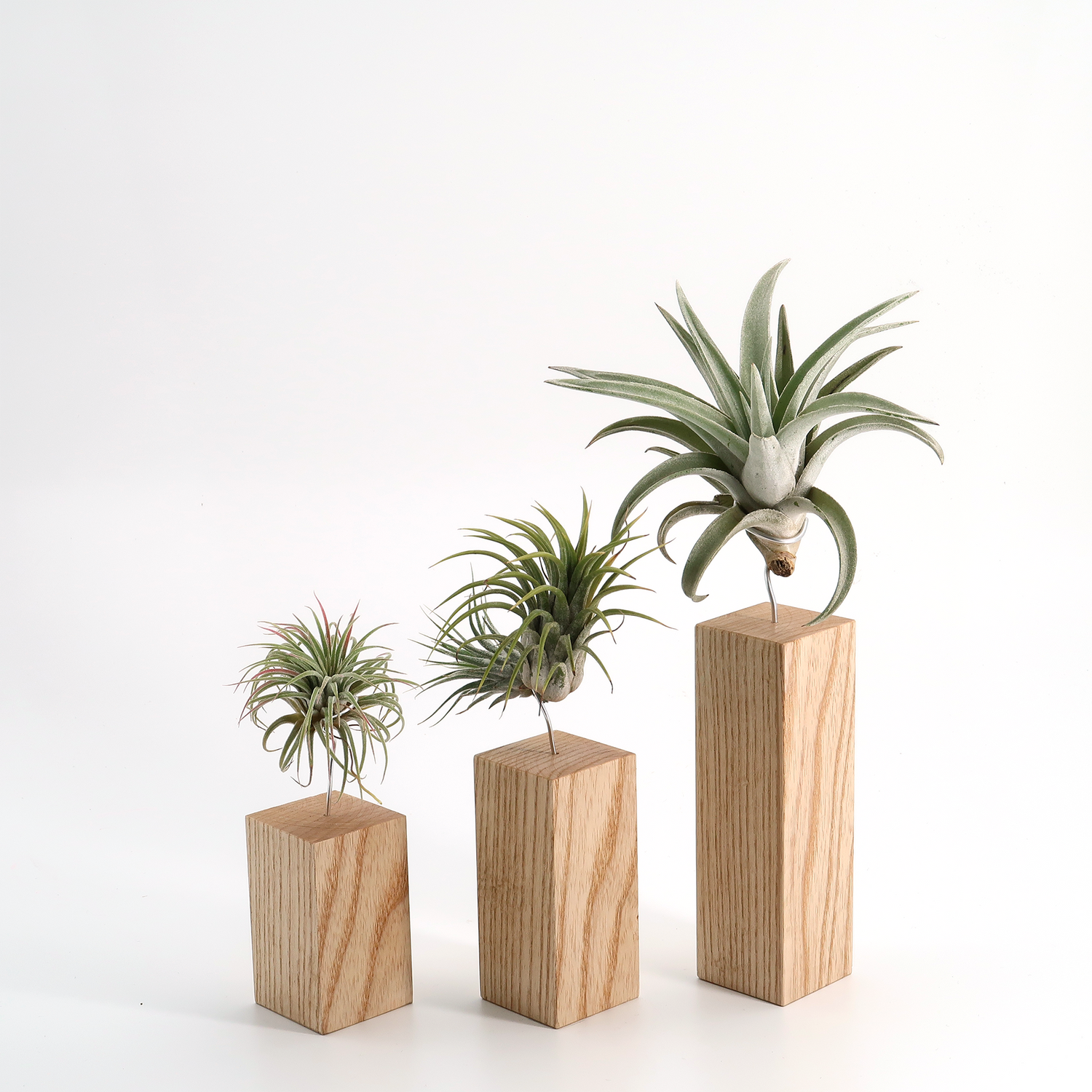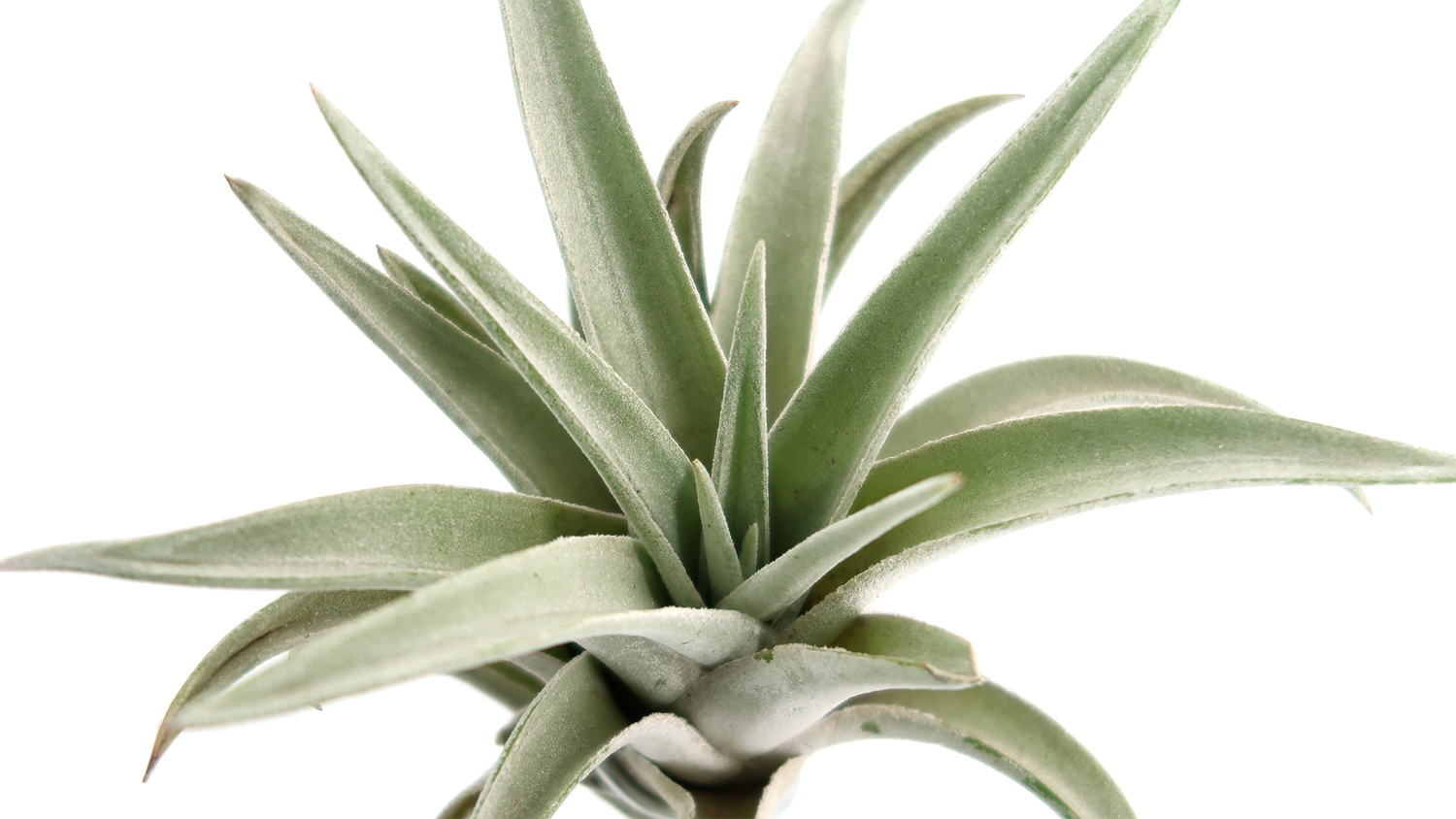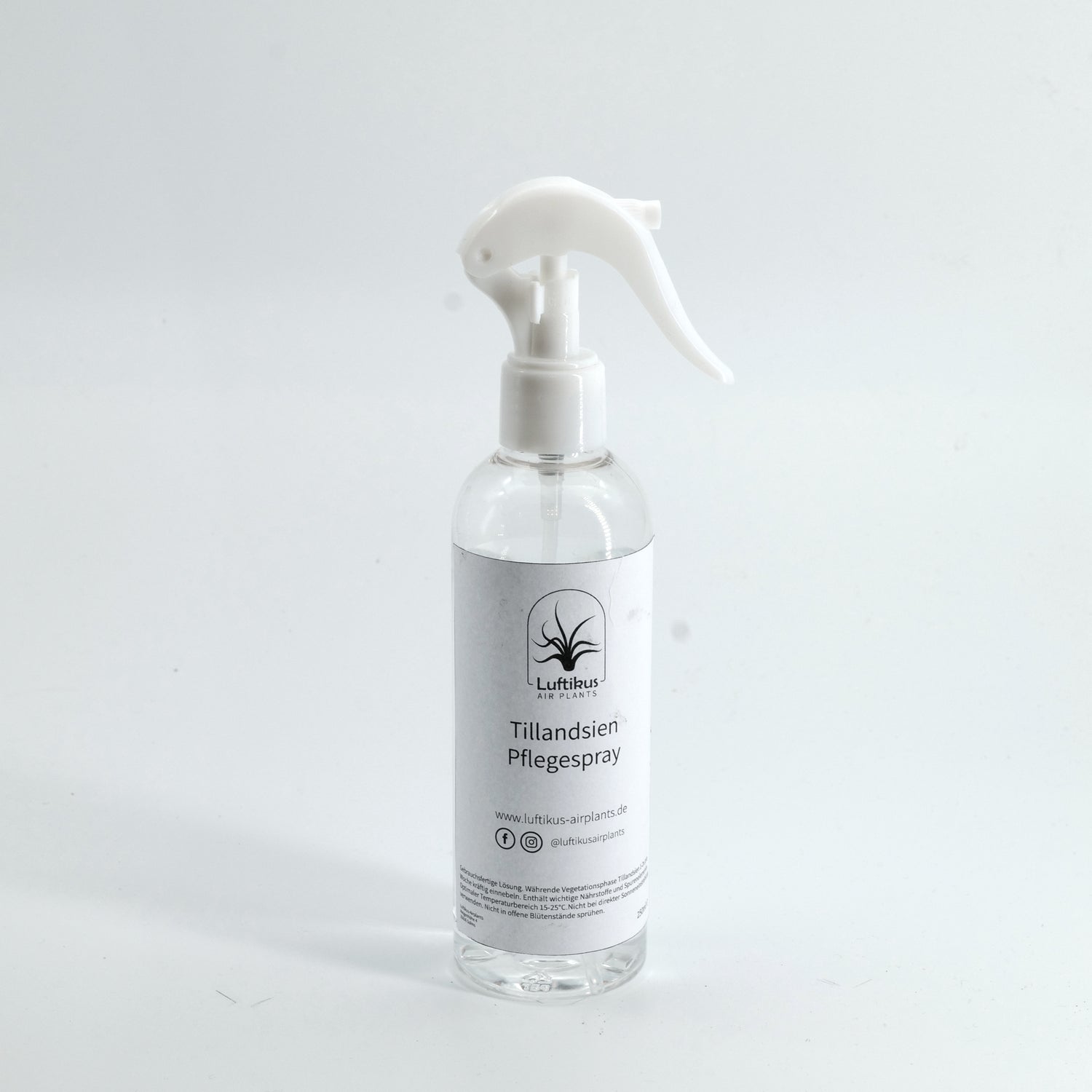![]()
Tillandsias are very low maintenance! But of course, they are living plants with needs and therefore not care-free. But do not worry, this is limited to the minimum and you can say that it almost does not get easier.
Here are the 5 golden rules that must be followed in the care and that will lead to vital plants.
1) Water
A common misconception is that air plants do not require supplemental water. In their natural habitats, tillandsias are always able to meet their water needs through high humidity. The conditions in your home are not optimal for this, therefore the water needs must be covered elsewhere. Of course, the needs differ from species to species, but there are some basic recommendations.
Tillandsias can not be watered in the traditional sense due to the lack of roots.
There are basically two methods: spraying or dipping.
We recommend the weekly dip (every 7- 10 days) as the simplest and safest method to provide the plants optimally. Of course, spraying may be done in between. Plants in bloom should be supplied only by spraying.
The water vessel must not have any residues of soap or detergents.
Let the plants soak in the water for about 6 hours or even over night.
Afterwards, and this is very important, let the plants completely dry. Directly from the water it is best to shake off excess and let dry upside down in a place with light and good air circulation, so that residual water can also run out of the leaf funnels.
A few more words about the water itself:
Rainwater
Of course rainwater is best suited, micronutrients are already dissolved in it and it is lime-free.
Filtered water (eg Brita filter)
Also a very good way to prepare your own tap water.
In many households already present just because of the coffee machine 😉
Tap water
If you live in a region with soft tap water, it will also work wonderfully. Tillandsia do not like lime at all, since it clogs their trichoms in the long run and they then can take up no more water at all.
.
2) Light
Depending on the Tillandsia species, the needs vary here as well.
Generally speaking, bright indirect or filtered light works for all of them.
So in an apartment, a window spot with morning sun. Especially during the summer, direct midday sun should be avoided.
Gray tillandsias tolerate more light, according to their habitat of origin, than green species which tend to be found on the lower floors of cool, humid rain forests.
3) Air
Not for nothing they are also called air plants.
They survive safely in closed living spaces but air circulation is very beneficial by a place at the open or tilted window. This also enables nutrient uptake by suspended particles from the air. This is often somewhat forgotten but it is still a relevant factor that should be respected. If not possible the plants should be turned from time to time.
4) Temperature
In an apartment less of an issue but tillandsias are cold and frost sensitive.
Anything below 8°C becomes critical. Heat is usually not a problem as long as the water supply is guaranteed.
5) Dont's
There are a few things you should avoid in order to enjoy your air plants for as long as possible.
Copper is poison for tillandsias! So do not use copper wire or copper vessels for presentation.
Do not handle the plants with your hands directly too often. Skin oils can clog the trichomes of the plants if they are touched excessively. The water absorption is thereby prevented.
